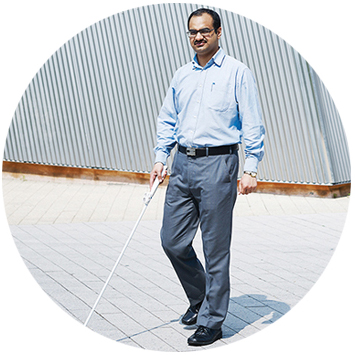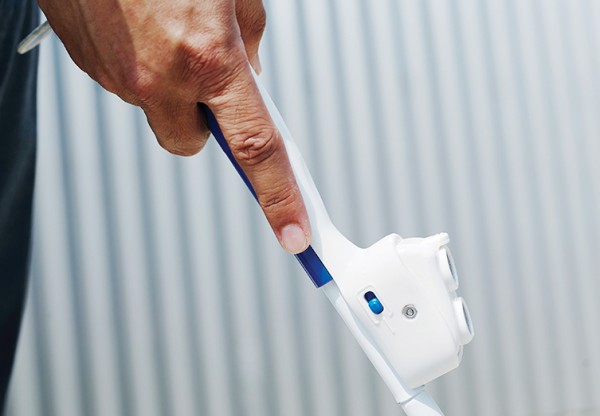
` Rohan Paul, 30
To create an affordable obstacle detection system for blind people, he began by simply asking them what they needed.
“In 2005, I was at the Indian Institute of Technology in Delhi as an undergraduate. As part of a course intended to design solutions for real-life challenges, we visited the National Association for the Blind in Delhi. We heard stories of how people with blindness get hurt when out walking—abruptly hitting open windows, tree branches, or vehicles. It creates so much fear that they are reluctant to step out without assistance.

We envisioned a sensing system on canes. By the end of the first year we had a basic prototype using ultrasonic ranging for detection and vibrations for feedback. You could see the users smile once they detected an obstruction; many refused to give back the prototypes!
We involved the users from the very beginning. They insisted that the device has to be small; if it falls it should not break; and it should allow any gripping or holding style. It has to detect everything, from signboards, people, parked cycles, or even cattle blocking the path—and also respond to obstacles approaching fast.
Women told us they wanted a device to be small enough so the cane can fold and fit into their purse. And they debated about color. Why? Because they would show it to someone else and say: ‘Am I looking smart with this?’ Men wanted to know if it will prevent touching or colliding with people; they told of women turning around and slapping them after such unintentional accidents. They don’t want to say, ‘Oh … excuse me, I didn’t see.’ It is about dignity as well as everyday safety. We engineers at times overlook the human side of a technology like this.

We ended up with a sleek handle-shaped attachment that fits on the traditional white cane. When we tested it in 2012 we saw users had 95 percent fewer collisions. We released it as a product in early 2014. The SmartCane costs only about $50 and is already in the hands of about 10,000 people. Our aim is to help one million or more worldwide.
It is a ‘people’s product’—a humble tribute to the Mahatma, who inspired innovators to harness science and technology for the masses.”
—as told to David Talbot
Watch this Innovator at EmTech 2015
Meet the Innovators Under 35
